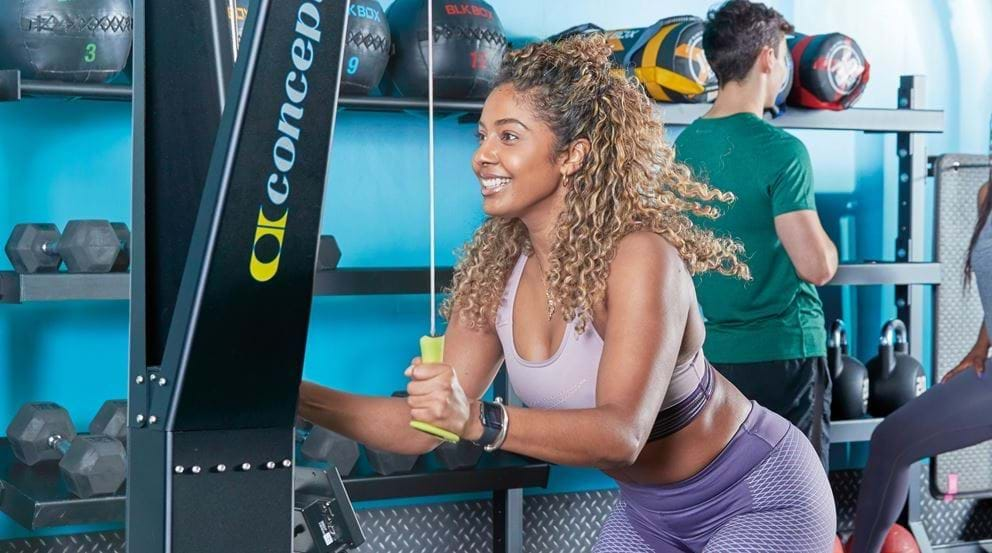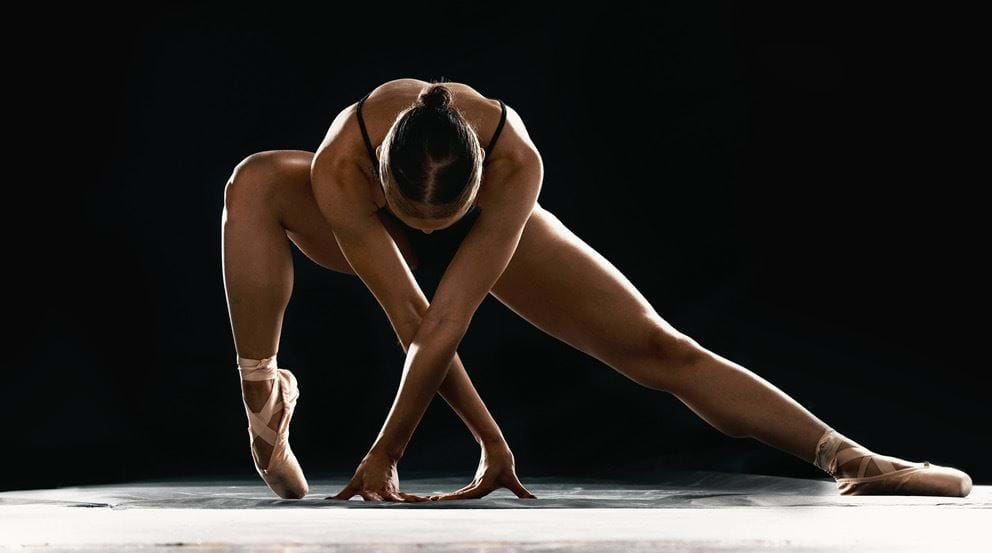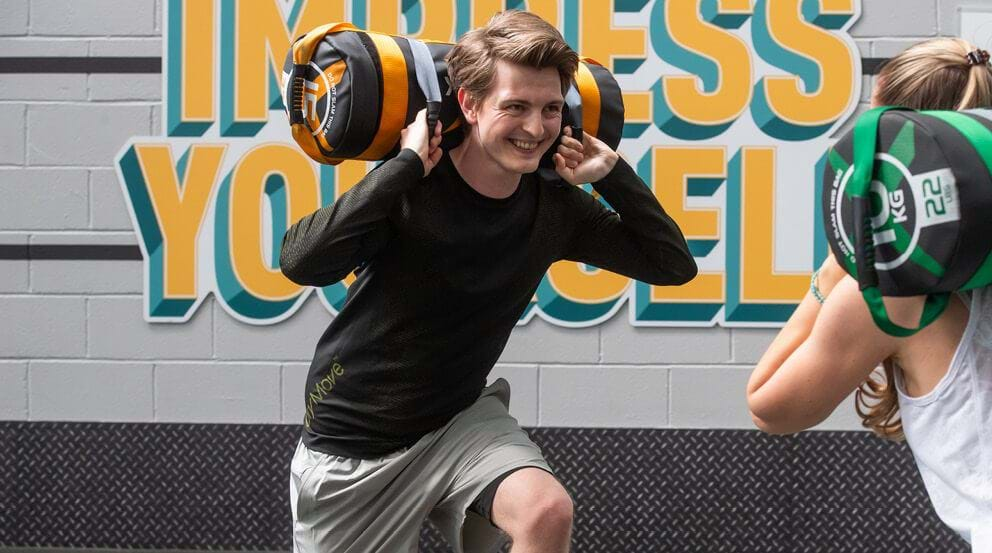What Is Hyrox And Why Is It Becoming So Popular?

Whether you stumbled across Hyrox on your favourite fitness influencer's social media or overheard it being discussed at the gym, it seems there's no getting away from Hyrox right now.
In this blog, we look at what Hyrox is, what are the benefits, who it's suitable for, and what training to do if you're planning on competing.
Founded in 2017, Hyrox is a global fitness race that aims to provide a new challenge for gym enthusiasts. The race combines functional strength training, high intensity interval training (HIIT) and endurance training, allowing it to test well-rounded fitness in a way that hasn't previously been done.
Each year, Hyrox hosts events for Hyrox athletes to compete in this race. Originally held in Hamburg, they've come a long way and events now take place worldwide. The pinnacle of these events is the Hyrox Championships where just 2,000 athletes out of a huge 90,000 competitors qualify to represent their country. Taking place across two days, the championships showcase the most competitive races, guest speakers, entertainment, and even a Hyrox party to end the event.
While only a few can go through to the Hyrox Championships, the race itself is suitable for almost everyone. Hyrox prides itself on being suitable for all and uses the slogan, 'The Fitness Competition for Every Body' to showcase that all fitness levels are welcome. The race is certainly challenging, but with training it's doable and can be a great way to push yourself.
What is in a Hyrox event?
If you're interested in taking part in a Hyrox event, it's helpful to know exactly what this strength and endurance indoor race consists of.
The format for all Hyrox events is the same and each competition consists of eight rounds, which all include a 1km run followed by a different functional exercise:
Rowing
How is Hyrox different from CrossFit?
From the outside, Hyrox and CrossFit might look quite similar -- they both involve high intensity workouts and functional movements, to create a challenging full body workout. There are key differences between the two, however, and many athletes choose to take part in both events! You can read more about Hyrox vs CrossFit here, but the main differences between CrossFit and Hyrox events are:
The competition: Hyrox races are always the same across the world. They use the same running distance and the same exercises, in the same order. Conversely, CrossFit competitions usually consist of a variety of workout routines, and competitors do not know what these workouts will be until just before the event begins. Hyrox events can last around 60-90 minutes, which is longer than most CrossFit workouts.
Exercises: Hyrox exercises have been selected as they are fairly safe and simple to perform, which allows the race to be accessible to the average gym goer. CrossFit workouts typically involve more complex and advanced movements that take lots of practice to master technique.
Running: Running makes up half of a Hyrox race, something that is not so commonly found in a CrossFit competition. Running 8km throughout the Hyrox race won't come easy to many and it might pose a new challenge to CrossFit athletes.
How fit do you need to be for a Hyrox event?
While the race is certainly challenging and requires training, Hyrox was created with the average gym goer in mind and 91% of Hyrox athletes are members of a local gym.
To make their events suitable for everybody, Hyrox provides four different race divisions to create an inclusive competition for all fitness levels.
Open: This consists of the standard Hyrox race that is challenging but achievable for most gym goers.
Individual Pro: For the more experienced Hyrox athlete, this division provides greater challenge by involving heavier weights.
Doubles: Work as a pair to take on the race! You'll complete the 1km runs together but you'll split the workload of the functional exercises.
Relay Teams: Split between four individuals, this race is ideal for gym, corporate or friendship teams.
Hyrox races do not have any time limits, nor do they require any qualifications, and according to Hyrox itself, 98% of participants are successful in completing the race.
While the race is certainly achievable for most people, it still requires some preparation and training to ensure you're ready to perform each exercise. Even if you're not looking to set a personal best, we'd still advise training for this event to minimise your risk of injury!
What are the benefits of Hyrox
Hyrox races challenge your strength, power, endurance, and cardiovascular fitness, and realistically require a certain level of training in order to complete. If you're wondering whether it's worth tackling an event, you'll be glad to know there's multiple benefits to be had including:
Improve athletic performance: Training for Hyrox involves a combination of strength, endurance, and mobility, all of which can translate to better athletic performance, including improved lifts in the gym.
Can help with fat loss: Hyrox training is intense and involves a mixture of cardio, strength, and endurance. Training for the event can help to burn plenty of calories which may make it easier to stick to a calorie deficit resulting in fat loss.
Aid everyday activities and movements: The improvements in strength, flexibility and mobility also contribute to everyday activities, enhancing movement efficiency and minimising injury risks.
It's a new challenge: Hyrox is a brand-new challenge that many gym goers won't have tried before. If you're someone who performs best when they have a goal to work towards, signing up for a Hyrox event can be a great way to provide some training variation and keep you motivated.
They're sociable: While training for Hyrox can be challenging, the events are very rewarding and sociable. On competition day you'll be cheered on by spectators and you'll rival likeminded individuals who share similar goals to you. You'll also become a part of the #HYSOCIETY, uniting everybody involved with Hyrox, from athletes to judges!
How to train for a Hyrox event
Hyrox is an intense, endurance event so incorporating appropriate training is important to minimise injury risks and maximise performance without burning out too quickly.
Practicing each of the functional exercises is very important, but you'll also want to compliment this with strength and endurance training that will contributes to the main moves!
You can also get a Hyrox training plan here.
Running -- 50% of Hyrox events are running, so part of your training should be endurance running and cardio training. Remember, you'll need to be able to run in between other exercises, so in addition to longer runs and cardio sessions, you'll want to include them as part of circuits to practice alternating between these styles of exercise.
SkiErg -- Works the lats, triceps, pectorals, obliques, abdominis, biceps, quads, hamstrings, glutes, and erector spinae, so incorporate full body exercises such as press ups, deadlifts, and pull ups!
Sled push -- Challenges the quads, glutes, hamstrings, pectorals, deltoids, and triceps, so you'll want to incorporate lower body and push exercises, such as bench press, lateral raises, leg extensions and reverse lunges.
Sled pull -- Builds the quads, hamstrings, erector spinae, biceps, traps and lats, so make sure to include lower body and pull exercises, such as bent over rows, lat pulldowns, good mornings and deadlifts!
Burpee broad jumps -- Targets the quads, hamstrings, glutes, deltoids, lats and traps. They require lots of power and work the entire body, so be sure to include exercises such as box jumps, hip thrusts, lunges, shoulder presses and lat pull downs.
Rowing -- Builds the quads, hamstrings, lats and rhomboids, so you'll want to train your legs and back with movements such as leg presses and barbell rows. It'll also be beneficial to practise your rowing technique using a rowing machine!
Farmers carry -- Works the obliques, abdominis, biceps, triceps, deltoids, traps, and grip strength, so incorporate exercises such as pallof press, crunches, bicep curls, face pulls and tricep extensions.
Sandbag lunges -- Builds the glutes, quads, calves, and hamstrings, so make sure to incorporate unliteral lower body movements, such as waking lunges, Bulgarian split squats, and reverse lunges.
Wall balls -- Challenges the quads, glutes, hamstrings, and deltoids, therefore exercises such as squats and military press will be beneficial!
It’s important to master your form in all these exercises to ensure they align with the movement standards to avoid being penalised on race day.
If Hyrox sounds like something you might enjoy, but you're not sure if you're ready to commit to an event just yet, why not try these exercises at one of our 340+ gyms across the UK? We have everything you need to get started in our functional training areas.
Find your nearest PureGym here, and sign up for a race at Hyrox.com.


